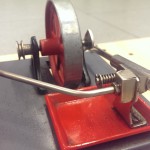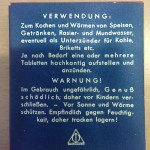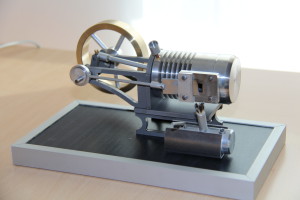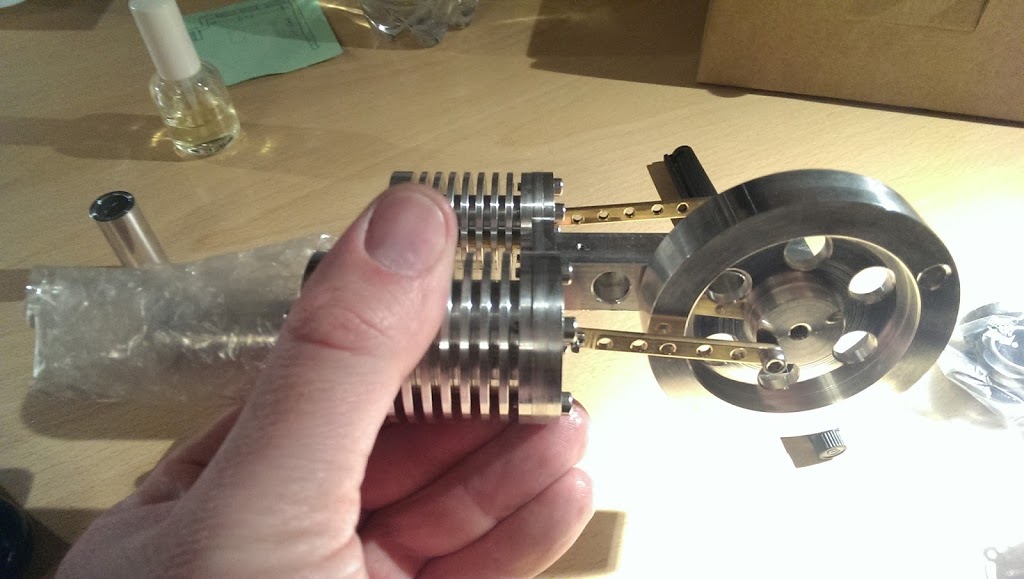![]()

The following piece is about 40 years old model steam engine from the manufacturer Wilesco. (Thanks to Manfred for the loan for the media preparation). The model consists of a highly polished and nickel-plated brass kettle, which is built into an old copper-colored boiler house with brick pattern. Heating is done with a dry spirit burner located under the boiler. The pressure vessel has a spring safety valve and a “Domdampfpfeife”. The pressure line is led to a single-acting pendulum cylinder, which in turn drives the crank and the flywheel on it via a connecting rod.Trockenspiritusbrenner.
 The entire model is mounted on an iron plate. In order to be able to drive mechanical models with the machine, a pulley is mounted on the shaft of the flywheel. Since the model has been stored in a carton for the past forty years, a few small jobs have been done. Piston and crank were stiff and had to be cleaned and re-oiled. The crank was a bit out of alignment with the flywheel shaft.
The entire model is mounted on an iron plate. In order to be able to drive mechanical models with the machine, a pulley is mounted on the shaft of the flywheel. Since the model has been stored in a carton for the past forty years, a few small jobs have been done. Piston and crank were stiff and had to be cleaned and re-oiled. The crank was a bit out of alignment with the flywheel shaft.
 The seals of the “Domdampfpfeife” and the pressure relief valve were also brittle and hardened and were replaced. Here I was able to use a suitable punching tool made of “new” old gasket material to knock out and insert two new gaskets. Now the model was a little bit freed from the dust of the last years and cleaned and a start attempt was nothing in the way.
The seals of the “Domdampfpfeife” and the pressure relief valve were also brittle and hardened and were replaced. Here I was able to use a suitable punching tool made of “new” old gasket material to knock out and insert two new gaskets. Now the model was a little bit freed from the dust of the last years and cleaned and a start attempt was nothing in the way.
Now the spirit burner could be filled with a small piece of dry spirit, which was probably even older than the machine itself. At least the original box looks like this:
Invalid Displayed Gallery






